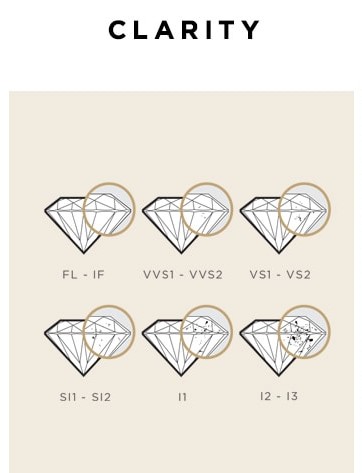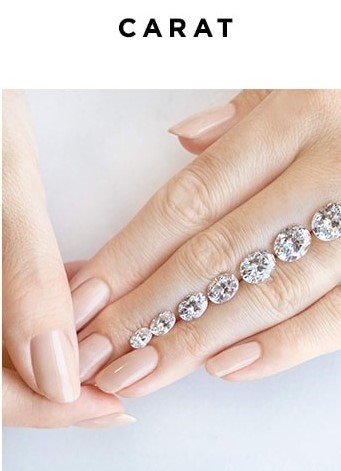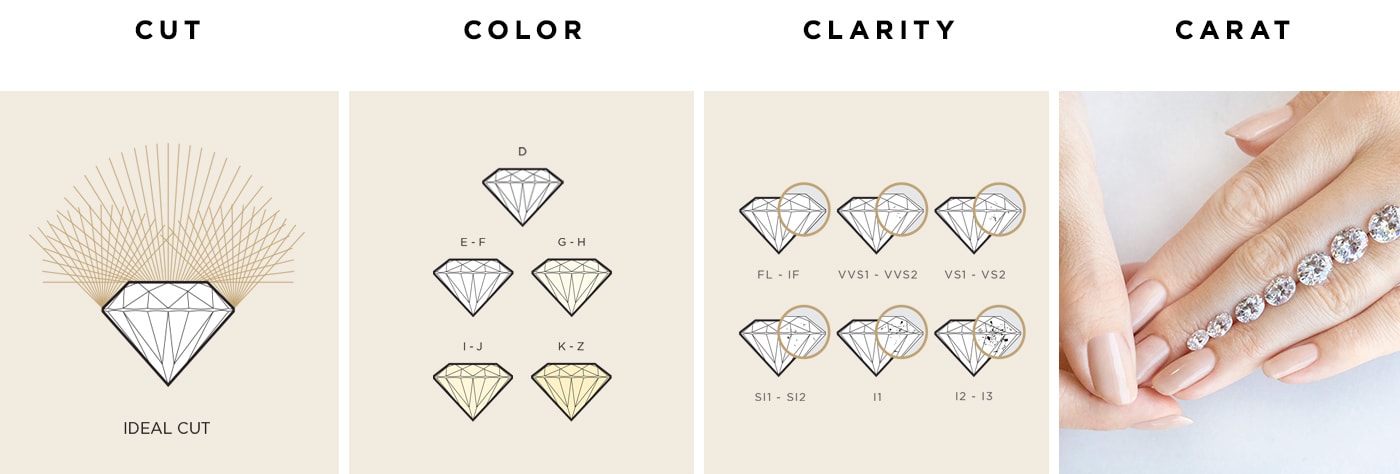What do the 4 C’s of Diamonds mean?
Each Diamond is completely unique and one-of-a-kind. To help determine the quality of each stone, we use the 4 C’s as a standardised way to assess each Diamond and their characteristics.
The 4 C’s are; Cut, Clarity, Colour and Carat. These factors help determine the grade of each Diamond and its value. Use our 4 C’s grading system as a useful tool to help you find the most suitable diamond for you. If you need any help at all our friendly Diamond Specialist is only a message away so please feel free to contact us at any time.
Cut
The cut refers to how each facet of the diamond interacts with light. This is the most important of the 4 C’s, as it has the greatest impact on the brightness and overall look of the stone.
The quality of the cut is determined by its symmetry, proportion and polish.
When a stone is cut with impeccable craftsmanship, light will enter and exit from the same facet. This give the diamond the most possible amount of sparkle and brilliance. This is called the Ideal Cut.
The grading for cut ranges from Excellent, Very Good, Good, Fair and Poor. It is recommended to aim for the highest grading possible for cut when selecting a diamond. A high quality cut will make the biggest difference to your stone selection compared to the other C’s.
Remember that the cut of a Diamond does not refer to it’s shape.

Colour
Colour is referred to as the second most important C as it can greatly impact the overall appearance of your stone depending on your chosen size and shape.
Diamond colours range from D-Z. D means the stone is colourless and is the rarest and highest grade a stone can receive.
A colourless stone allows for the greatest amount of light through and will give a brilliant white appearance. Z means the diamond shows a visible yellowish tone.
D-K rated stones are most commonly used for engagement rings. D- F is categorized as colourless and G -K are considered near colourless. The difference between D-K is difficult to determine without a side by side comparison or diamond colour chart.
Read more about the different shades of Diamond Colour here.

Clarity
A diamond clarity refers to how visually pure and clean the stone is. This is determined by the amount of imperfections detected on the stone by magnification.
As each diamond is unique, it is important to identify the clarity of the diamond to understand its value. Internally found lines or marks can ultimately affect the light refractions making the diamond look cloudy.
5 factors are considered when determining a diamond’s clarity. These include the number of imperfections, the size of blemishes, the nature of the characteristics (and whether it effects the durability of the diamond), where it is on the diamond and the noticeable contrast the imperfection has compared to the rest of the diamond.
Clarity rating ranges from Flawless (F) to Included (I). Less than 1% of all diamonds are rated Flawless (F) as they show zero imperfections under 10x magnification. Flawless diamonds are incredibly rare and extremely expensive. Included (I) diamonds have obvious inclusions that are eye-visible.

Carat
Carat refers to the weight of the diamond and not the size. 1 carat is equivalent to 0.2 grams. 1 carat is divided into 100 points. This means a 50 point diamond weighs 0.5 grams.
The carat helps to determine the price of the diamond and the higher the carat the more expensive the diamond will be.
However, a higher carat diamond does not equate to a better stone. Two stones can have the exact same carat but depending on the depth of the cut, the clarity, the colour and the shape of the diamond the price can vary significantly. For example, an optimised cut, colour and clarity stone can in fact look like a 2.1 carat diamond due to its dimensions.
Contrary to popular belief, a larger diamond is not necessarily better. Due to its larger surface area it has more potential for a poorer cut and imperfections are more prevalent. However, a high carat diamond that has a high standard of cut, colour and clarity is extremely rare and very highly valued.


